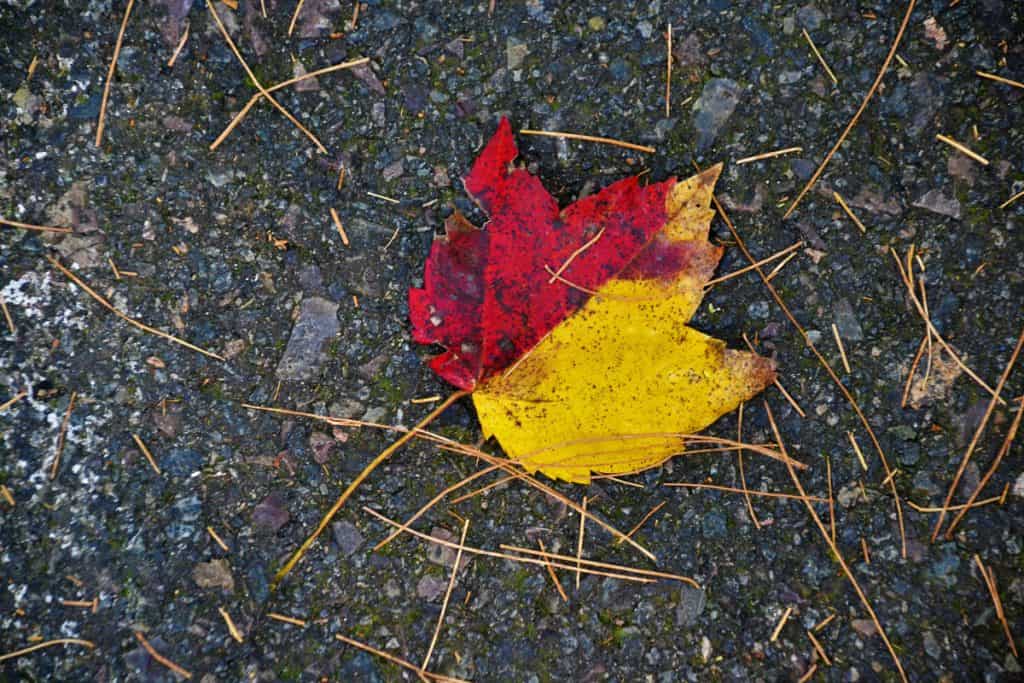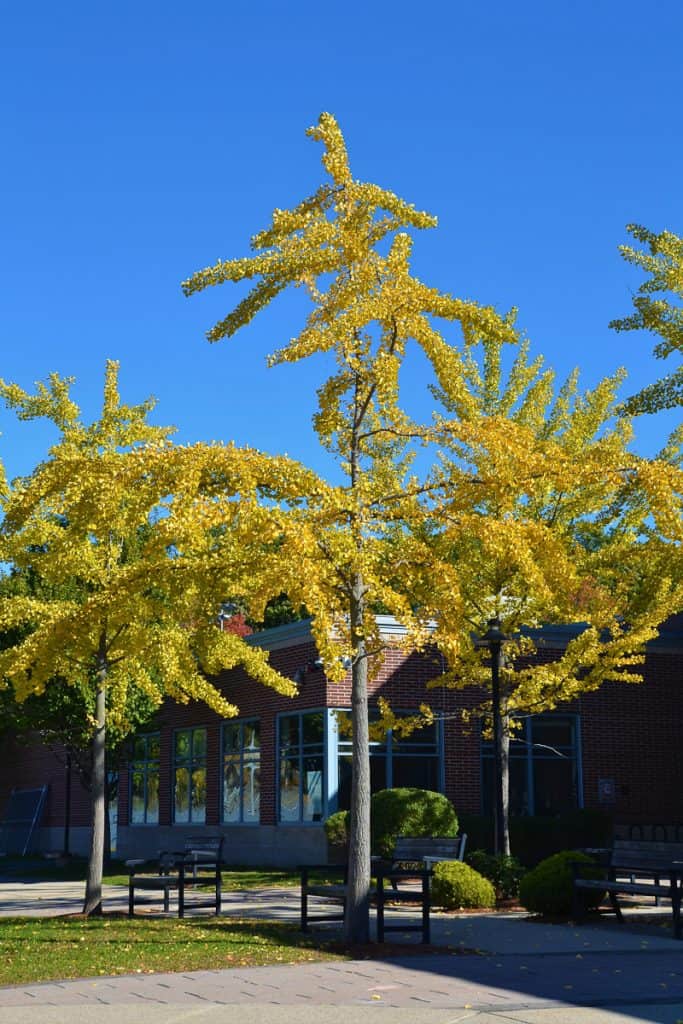
With Veterans Day arriving next Thursday, it seems appropriate to reflect on the ginkgo trees growing at the entrance of the Veterans Memorial Elementary School on Hurd Avenue, especially since their golden fall foliage is hard to miss. Ginkgo or maidenhair tree (Ginkgo biloba) is one of the oldest plant species, having remained essentially unchanged over 200 million years, based on fossil examples. The most recognizable characteristic is the fan-shaped leaf with veins radiating outward from the petiole, rather than having a main central vein with smaller veins branching off of it, as trees such as maple have. Based on this and many other characteristics, scientists believe the ginkgo to be the “Missing link” in evolution between the gymnosperms (the botanical group which includes conifers) and the angiosperms (the botanical group which includes deciduous trees, such as maples and oaks and broadleaf evergreens like rhododendron). Despite the fact that its leaves outwardly resemble maidenhair ferns (Adiantum spp.) it is not considered closely related to the ferns. Classified among the gymnosperms, ginkgo has no close living relatives, although there is fossil evidence of some extinct relatives. Since it has no close near relations now, pests and diseases have not developed in association with it, and as a result ginkgos are extremely pest resistant. Some individual trees are believed to be over 1,000 years old.
Often planted around temples and schools, ginkgos are very highly regarded in many Asian countries. Six ginkgos are among the approximately 170 trees that survived the atomic blast at Hiroshima on August 6, 1945.
The ginkgo species produces male flowers on some trees and female flowers on others, similarly to holly (Ilex spp.). Female trees can only produce fruit if pollinated by nearby male trees. Since the fleshy outer portion of the fruit has an unpleasant odor (although the “nut” inside is edible), male trees are usually chosen for ornamental purposes. Nevertheless, when I examined the trees at the Veterans School, four out of the six were producing small quantities of fruit, suggesting that these four are female but the other two are male and produce the pollen to fertilize the female trees. All the trees have very beautiful golden fall color.
Unlike the gradual turning of color on many other trees, such as maples and sassafras, ginkgos often develop a very uniform shade of gold on all the leaves almost simultaneously, and they have the reputation that all the ginkgo leaves in one area fall in a single 24-hour period. This is not always true, though, since some leaves on these ginkgos had dropped before our late October nor’easter, while others remained on the tree into early November. Also, the young ginkgo planted by the tree committee at the Lynnhurst School a few years ago was still completely green on Election Day, so it will still be a while before this one loses its leaves.
Flowers that kept blooming through last week’s storms and can bounce back after a light frost are hydrangeas (Hydrangea spp.), roses, butterfly bush (Buddleia davidii), white snakeroot (Ageratina altissima), chrysanthemums (Chrysanthemum morifolium), Montauk daisy (Nipponanthemum nipponicum), Korean mum (Dendranthema spp.) and a few others. The last two are close relatives of chrysanthemums. Montauk daisy is a very late blooming perennial with classic daisy flowers: yellow discs and white rays.
Of Korean mums (Dendranthema hybrids, formerly classed as Chrysanthemum koreana or Chrysanthemum zawadskii hybrids), the most popular variety is dendranthema ‘Sheffield Pink,’ which has yellow discs and pale peach or salmon rays. Its foliage looks and smells very much like that of its relative chrysanthemum, and botanists continue to argue whether they should be classed in separate genera or not. They are very hardy and their long stems make them good as cut flowers. For a short period in the late 20th century, most chrysanthemums were classed as dendranthema or dendranthemum, causing a great deal of controversy among taxonomists! Whatever we decide to call them, these composite flowers bring a lot of joy to the last months of the growing season!
Editor’s Note: Laura Eisener is a landscape design consultant who helps homeowners with landscape design, plant selection and placement of trees and shrubs, as well as perennials. She is a member of the Saugus Garden Club and offered to write a series of articles about “what’s blooming in town” shortly after the outbreak of the COVID-19 pandemic. She was inspired after seeing so many people taking up walking





